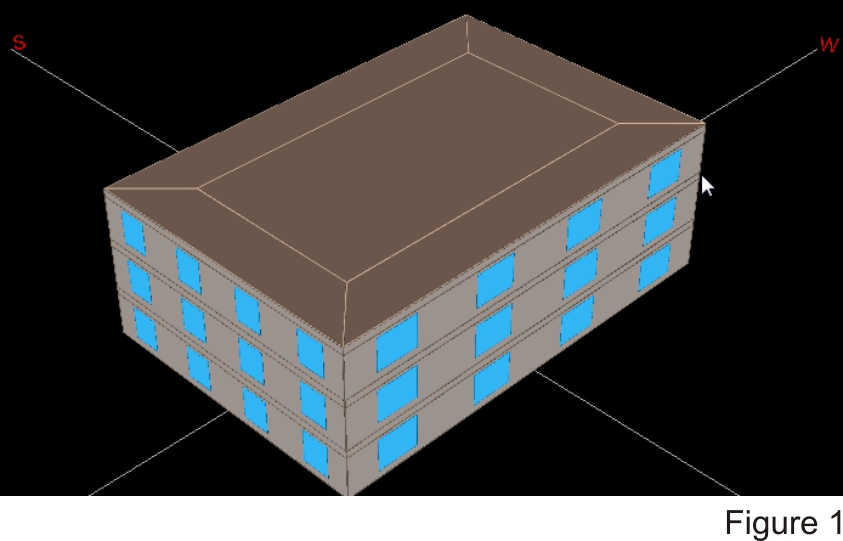
Stay Toasty this Winter with VRF
Variable Refrigerant Flow (VRF) is an HVAC technology that uses refrigerant as the cooling and heating medium, and allows one outdoor condensing unit to be connected to multiple indoor fan-coil units. While VRF is a relatively new technology to U.S. building owners, it has been gaining popularity due to its efficiency (when applied appropriately).
Two types of VRF implementations exist: heat pump VRF and heat recovery VRF. Heat recovery VRF addresses a common energy savings opportunity: daytime heat from lights, equipment, people, and sunlight may be enough to heat the building, but, this heat is often not available where or when it is needed. Consider the 30,000 square-foot office building in Figure 1. The gray lines on the roof mark five spaces where thermostats independently control comfort on each floor. The chart shows how much heat top floor spaces need on a typical Monday, in January (Des Moines, IA with clear skies and temperatures in the 30s). Red means the space is too cold—heat is needed; blue means the space is too warm— cooling is needed; white means the space is about right—a small amount of heating or cooling is needed. (The chart does not include energy to temper ventilating air.)
A few things to notice:
- During the day, the building almost “heats itself.”
- During the night, all spaces but one need heat.
- If it could be stored, extra heat available during the day could offset some heat needed at night.
- The south zone has enough excess heat during the day, when the sun is shining, to heat the remaining spaces.
This is where heat recovery VRF comes in. The loop of refrigerant that connects all the heat pumps together can pump heat from zones with an excess to those with too little. This relaxes the load on the outdoor unit and saves energy.
Ideally, sources of heat would be available for as many hours of the day as possible. These should be matched (by a heat recovery VRF system) with perimeter zones with a sustained need for heat. Examples of spaces with excess heat include: kitchens/restaurants, copy/print rooms, spaces for computing and communications equipment, retail spaces, regularly occupied conference spaces, south facing rooms, core spaces with no windows or exterior walls.
The designer should use an energy model to carefully “tune” window sizes and locations, insulation levels, and heat sources and sinks so the seasonal balance between heat sources and sinks is near optimal.
To really get the most from a VRF system, particularly in northern climates, spaces with excess heat should be paired with spaces that need it. Otherwise, the VRF system essentially turns into an expensive air-source heat pump system (albeit an efficient one), which does not heat economically when it’s really cold outside.




